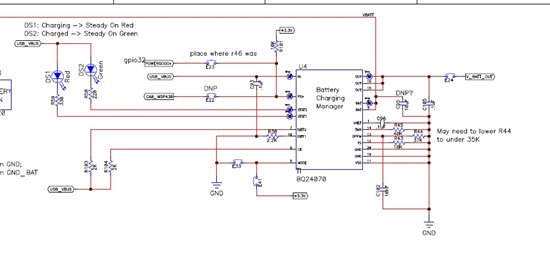
I hope the schematic comes through okay. I have a 1800mAh Li-ion, 3.7V single cell battery.
I'm using a USB cable but we're going through a wall charger. I've been using mode low. Should I use mode high? We don't have the pins available on the mcu to handle that pin so I need to tie it.
We are seeing strange current limiting. I have Rset at 2.2K to get 482mA of recharge current, but it never seems to get anywhere near that and starts out around 220mA and then slowly drops. I've changed the Rset value to be 500ohms thinking I'd go for the gold and see if I could increase the current. This all seems to be true for either wall power or pc usb port power. Too low current.
Why is my current so low?
Also, stat LED's behave strangely when they get near the full charge threshold. I've increased the Rtmr resistor so I can watch it for over 9 hours. When the current drops to around 60mA, both LED's start flashing.
Any thoughts? I've waited too long to seek support on this issue and now I"m in a critically important time and need help immediately. Please let me know as soon as possible.
Thanks,
David Havell

